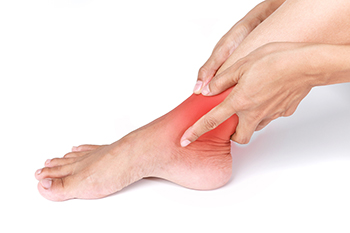
The most common ankle problems, especially among athletes and runners, are sprains and strains. The ankle joint contains a variety of muscles, ligaments, and tendons that are subject to injury. Because the ankle sustains one and a half times the body weight with each step you take, and more than eight times the body’s weight when you run or jump, it is easy to see why it may be subject to injury. A sprain occurs when a ligament in the ankle is stretched beyond its limit, while a strain occurs when either a muscle or a tendon is overstretched or torn. Strains are more likely to be the result of overuse. A sprain can also be the result of overuse, but most often is caused by trauma, such as landing wrong on the foot and causing it to twist inward. This can be because of a misstep on a curb, or by stumbling during an athletic event. Whether it’s a sprain or a strain, if you have sustained an ankle injury that impedes your daily activities or causes extreme pain, please see a podiatrist for an exam and treatment options.
Ankle pain can have many different causes and the pain may potentially be serious. If you have ankle pain, consult with one of our podiatrists from Lovely Foot Associates, PC. Our doctors will assess your condition and provide you with quality foot and ankle treatment.
Ankle pain is any condition that causes pain in the ankle. Due to the fact that the ankle consists of tendons, muscles, bones, and ligaments, ankle pain can come from a number of different conditions.
Causes
The most common causes of ankle pain include:
Symptoms
Symptoms of ankle injury vary based upon the condition. Pain may include general pain and discomfort, swelling, aching, redness, bruising, burning or stabbing sensations, and/or loss of sensation.
Diagnosis
Due to the wide variety of potential causes of ankle pain, podiatrists will utilize a number of different methods to properly diagnose ankle pain. This can include asking for personal and family medical histories and of any recent injuries. Further diagnosis may include sensation tests, a physical examination, and potentially x-rays or other imaging tests.
Treatment
Just as the range of causes varies widely, so do treatments. Some more common treatments are rest, ice packs, keeping pressure off the foot, orthotics and braces, medication for inflammation and pain, and surgery.
If you have any questions, please feel free to contact our office located in Johnstown, PA . We offer the newest diagnostic and treatment technologies for all your foot care needs.
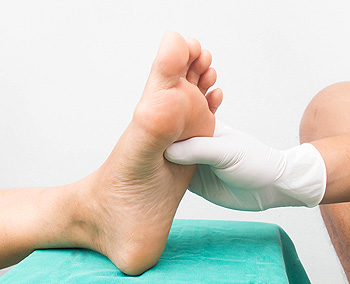
Many people with diabetes begin to develop problems in their lower legs and feet. Many develop corns, calluses, blisters, and skin ulcers. The main cause of ulcers is an increased level of blood sugar in the body, which can damage nerves (specifically those in the extremities). The result is a condition known as diabetic neuropathy, which is experienced by about 70 percent of diabetics, studies show. The numbing sensation to the feet invites all sorts of problems, including cracked heels, sores that go undetected, and increased exposure to bacterial and fungal infections. It is suggested that diabetics examine their feet daily for cracks, wounds, and sores. Wear shoes that fit properly, and avoid socks that are too tight. Avoid walking barefoot, indoors and out. Keep the feet clean and thoroughly dried each day. Quitting smoking and doing low-impact exercise are recommended by experts. Most importantly, if you have foot problems related to diabetes, please contact a podiatrist for regular visits to stay on top of any complications that may develop.
Diabetic foot care is important in preventing foot ailments such as ulcers. If you are suffering from diabetes or have any other concerns about your feet, contact one of our podiatrists from Lovely Foot Associates, PC. Our doctors can provide the care you need to keep you pain-free and on your feet.
Diabetic Foot Care
Diabetes affects millions of people every year. The condition can damage blood vessels in many parts of the body, especially the feet. Because of this, taking care of your feet is essential if you have diabetes, and having a podiatrist help monitor your foot health is highly recommended.
The Importance of Caring for Your Feet
Patients with diabetes should have their doctor monitor their blood levels, as blood sugar levels play such a huge role in diabetic care. Monitoring these levels on a regular basis is highly advised.
It is always best to inform your healthcare professional of any concerns you may have regarding your feet, especially for diabetic patients. Early treatment and routine foot examinations are keys to maintaining proper health, especially because severe complications can arise if proper treatment is not applied.
If you have any questions please feel free to contact our office located in Johnstown, PA . We offer the newest diagnostic and treatment technologies for all your foot and ankle needs.
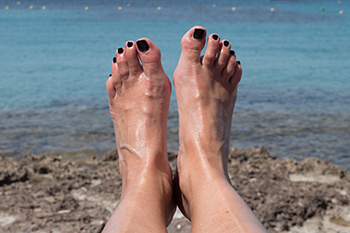
Learning more about the biomechanics of how the feet work can help an individual better protect their feet from developing damaging conditions. One important thing to know about how the feet function is that there are critical areas of fat padding on the feet. Typically, individuals try to minimize the extent to which they have fat on their bodies, but fat can serve an important role on the soles of the feet. For example, fat padding on the bottom of the feet protect the plantar area from the repeated pressure that is felt on the feet from weight-bearing activity. If the feet are not properly cared for, then an individual might lose critical fat padding on the feet or experience fat pad atrophy of some kind. As a result, a patient may develop microtears as a result of the loss of fat. If you are someone that is especially concerned with protecting their feet, contact a podiatrist today for more help.
If you have any concerns about your feet, contact one of our podiatrists from Lovely Foot Associates, PC. Our doctors can provide the care you need to keep you pain-free and on your feet.
Biomechanics in Podiatry
Podiatric biomechanics is a particular sector of specialty podiatry with licensed practitioners who are trained to diagnose and treat conditions affecting the foot, ankle and lower leg. Biomechanics deals with the forces that act against the body, causing an interference with the biological structures. It focuses on the movement of the ankle, the foot and the forces that interact with them.
A History of Biomechanics
Modern technological improvements are based on past theories and therapeutic processes that provide a better understanding of podiatric concepts for biomechanics. Computers can provide accurate information about the forces and patterns of the feet and lower legs.
Understanding biomechanics of the feet can help improve and eliminate pain, stopping further stress to the foot.
If you have any questions please feel free to contact our office located in Johnstown, PA . We offer the newest diagnostic and treatment technologies for all your foot and ankle needs.
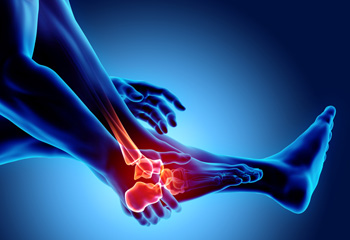 The condition that is known as Charcot foot is considered to be a rare foot condition. It happens as a result of bones, joints, and soft tissues that gradually weaken in the foot and ankle. It can occur from nerve damage from diabetes and can cause the inability to feel pain. In severe cases, the bones may fracture from being weak, and the joints may become dislocated in the ankle or foot. If medical attention is not received, the foot can become deformed, and eventually may lead to the patient developing a bone infection or a foot ulcer. An additional reason why Charcot foot may happen can be from a fracture or sprain. The patient may continue to walk on the broken foot because they are unable to feel painful sensations, and the foot structure may change from trauma that is done to the bone. It is beneficial to begin treatment as early as possible, which generally starts with protecting the affected foot with a removable boot. Additionally, it is crucial to refrain from placing any weight on the foot until it begins to heal. If you have this rare foot condition, it is strongly advised that you are under the care of a podiatrist who can effectively diagnose and treat Charcot foot.
The condition that is known as Charcot foot is considered to be a rare foot condition. It happens as a result of bones, joints, and soft tissues that gradually weaken in the foot and ankle. It can occur from nerve damage from diabetes and can cause the inability to feel pain. In severe cases, the bones may fracture from being weak, and the joints may become dislocated in the ankle or foot. If medical attention is not received, the foot can become deformed, and eventually may lead to the patient developing a bone infection or a foot ulcer. An additional reason why Charcot foot may happen can be from a fracture or sprain. The patient may continue to walk on the broken foot because they are unable to feel painful sensations, and the foot structure may change from trauma that is done to the bone. It is beneficial to begin treatment as early as possible, which generally starts with protecting the affected foot with a removable boot. Additionally, it is crucial to refrain from placing any weight on the foot until it begins to heal. If you have this rare foot condition, it is strongly advised that you are under the care of a podiatrist who can effectively diagnose and treat Charcot foot.
Some foot conditions may require additional professional care. If you have any concerns, contact one of our podiatrists of Lovely Foot Associates, PC. Our doctors can provide the care you need to keep you pain-free and on your feet.
Rare Foot Conditions
The majority of foot conditions are common and can be treated by a podiatrist. Standard diagnostic procedures are generally used to identify specific conditions and treatment can be rendered. A podiatrist also treats rare foot conditions which can be difficult to diagnose and may need extra attention and care.
There are many rare foot conditions that can affect children. Some of these can include:
Freiberg’s disease - This can be seen as a deterioration and flattening of a metatarsal bone that exists in the ball of the foot. It typically affects pre-teen and teenage girls, but can affect anyone at any age. Symptoms that can accompany this can be swelling, stiffness, and the patient may limp.
Kohler’s disease - This often targets the bone in the arch of the foot and affects younger boys. It can lead to an interruption of the blood supply which ultimately can lead to bone deterioration. The patient may limp or experience tenderness, swelling, and redness.
Maffucci syndrome - This affects the long bones in a child’s foot leading to the development of abnormal bone lesions. They are benign growths and typically develop in early childhood and the bones may be susceptible to breaking.
A podiatrist can properly diagnose and treat all types of rare foot conditions. If your child is affected by any of these symptoms or conditions, please don’t hesitate to call our office so the correct treatment method can begin.
If you have any questions please feel free to contact our office located in Johnstown, PA . We offer the newest diagnostic tools and technology to treat your foot and ankle needs.
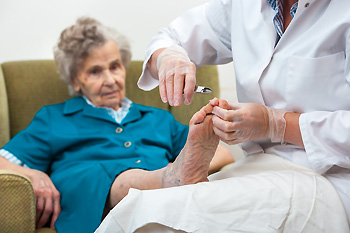
Senior citizens are particularly at risk of experiencing complications in their foot health. This is due to several reasons, most of which involve the diminishing health and resilience of the feet among senior citizens. One of the most important parts of caring for the feet as a senior includes choosing to listen to the feet when they are trying to tell you that something is wrong. Often, if the feet are feeling painful, it is always the more cautious option to not ignore signs of pain. If you are a senior citizen, it can be important to remind yourself that having painful feet or sore feet is not an inevitable part of growing older. If you think that your feet are trying to tell you that something is not right, take this seriously and do not ignore any signs. If you are experiencing foot pain as a senior citizen, contact a podiatrist today. By meeting with a podiatrist, you can help draw up a plan to address any pain in the feet.
Proper foot care is something many older adults forget to consider. If you have any concerns about your feet and ankles, contact one of our podiatrists from Lovely Foot Associates, PC. Our doctors can provide the care you need to keep you pain-free and on your feet.
The Elderly and Their Feet
As we age we start to notice many changes in our body, but the elder population may not notice them right away. Medical conditions may prevent the elderly to take notice of their foot health right away. Poor vision is a lead contributor to not taking action for the elderly.
Common Conditions
Susceptible Infections
Diabetes and poor circulation can cause general loss of sensitivity over the years, turning a simple cut into a serious issue.
If you have any questions please feel free to contact our office located in Johnstown, PA . We offer the newest diagnostic and treatment technologies for all your foot and ankle needs.

Lawn bowling can be fun and provide competition in a friendly community of like-minded people. As with many sports, one can sustain foot and ankle injuries in lawn bowling. Common foot and ankle injuries from this activity include falls resulting in fractures, especially to the ankle. It is important to warm up properly, stretch, and do balance and strength training exercises before beginning any physical activity. Maintain proper form and technique during play. Also, it is imperative to let injuries heal properly before getting back to play, as this will help prevent worsening of the original injury, re-injury, strains, and sprains. See a podiatrist if your feet or ankles have been injured during lawn bowling. This foot and ankle care professional can evaluate the problem and provide treatment that will get you back into the sport you derive so much enjoyment from as soon as possible.
Ankle and foot injuries are common among athletes and in many sports. They can be caused by several problems and may be potentially serious. If you are feeling pain or think you were injured in a sporting event or when exercising, consult with one of our podiatrists from Lovely Foot Associates, PC. Our doctors will assess your condition and provide you with quality foot and ankle treatment.
Common Injuries
The most common injuries that occur in sporting activities include:
Symptoms
Symptoms vary depending upon the injury and in some cases, there may be no symptoms at all. However, in most cases, some form of symptom is experienced. Pain, aching, burning, bruising, tenderness, tightness or stiffness, sensation loss, difficulty moving, and swelling are the most common symptoms.
Treatment
Just as symptoms vary depending upon the injury, so do treatment options. A common treatment method is known as the RICE method. This method involves rest, applying ice, compression and elevating the afflicted foot or ankle. If the injury appears to be more serious, surgery might be required, such as arthroscopic or reconstructive surgery. Lastly, rehabilitation or therapy might be needed to gain full functionality in the afflicted area. Any discomfort experienced by an athlete must be evaluated by a licensed, reputable medical professional.
If you have any questions, please feel free to contact our office located in Johnstown, PA . We offer the newest diagnostic and treatment technologies for all your foot care needs.
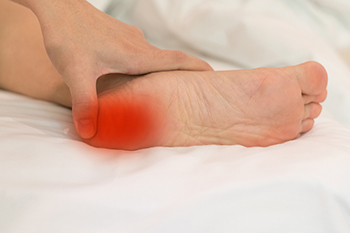
The foot condition that is known as Sever’s disease can affect children and young teenagers who participate in running and jumping activities. It is considered to be an ailment that comes from overuse in and around the growth plate in the heel. The child may complain of having heel pain, and can have difficulty in walking. A podiatrist can perform a proper diagnosis, which consists of having a physical examination done, in addition to learning about the child's choice of activities. The child will eventually outgrow Sever’s disease, and until then, mild relief can be found when the activity that caused this condition is temporarily stopped. Patients may also find that it helps to elevate the affected foot as often as possible, and it may be beneficial to wear a heel pad in the shoe. It is strongly suggested that your child sees a podiatrist at the first sign of heel pain, so a proper diagnosis can be performed, and the correct treatment can promptly begin.
Sever's disease often occurs in children and teens. If your child is experiencing foot or ankle pain, see one of our podiatrists from Lovely Foot Associates, PC. Our doctors can treat your child’s foot and ankle needs.
Sever’s Disease
Sever’s disease is also known as calcaneal apophysitis, which is a medical condition that causes heel pain I none or both feet. The disease is known to affect children between the ages of 8 and 14.
Sever’s disease occurs when part of the child’s heel known as the growth plate (calcaneal epiphysis) is attached to the Achilles tendon. This area can suffer injury when the muscles and tendons of the growing foot do not keep pace with bone growth. Therefore, the constant pain which one experiences at the back of the heel will make the child unable to put any weight on the heel. The child is then forced to walk on their toes.
Symptoms
Acute pain – Pain associated with Sever’s disease is usually felt in the heel when the child engages in physical activity such as walking, jumping and or running.
Highly active – Children who are very active are among the most susceptible in experiencing Sever’s disease, because of the stress and tension placed on their feet.
If you have any questions, please feel free to contact our office located in Johnstown, PA . We offer the newest diagnostic and treatment technologies for all your foot and ankle injuries.
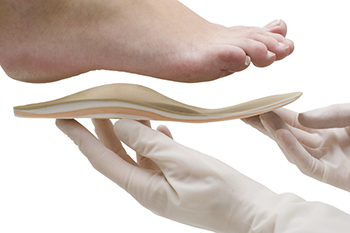
The purpose of wearing orthotics is to relieve foot pain which may happen from having an abnormal foot structure, or if a foot condition has occurred. The average adult walks approximately 5000 steps per day, and foot pain can make this uncomfortable and difficult to accomplish. The three groups of orthotics are soft, rigid, and semi-rigid. A podiatrist can determine which type is right for you based on your foot condition. Flexible materials are used to design soft orthotics which can help to reduce pressure and absorb shock as walking and running are done. A more durable orthotic is referred to as a rigid orthotic and is made of plastic or graphite materials. This type of device can provide stability to the lower body. The most common orthotics are known as semi-rigid and are designed with a combination of both soft and rigid materials. If you would like additional information about how wearing orthotics can minimize specific foot conditions, please consult with a podiatrist who can determine if this is the correct choice for you.
If you are having discomfort in your feet and would like to try orthotics, contact one of our podiatrists from Lovely Foot Associates, PC. Our doctors can provide the care you need to keep you pain-free and on your feet.
What Are Orthotics?
Orthotics are inserts you can place into your shoes to help with a variety of foot problems such as flat feet or foot pain. Orthotics provide relief and comfort for minor foot and heel pain but can’t correct serious biomechanical problems in your feet.
Over-the-Counter Inserts
Orthotics come in a wide variety of over-the-counter inserts that are used to treat foot pain, heel pain, and minor problems. For example, arch supports can be inserted into your shoes to help correct overarched or flat feet, while gel insoles are often used because they provide comfort and relief from foot and heel pain by alleviating pressure.
Prescription Orthotics
If over-the-counter inserts don’t work for you or if you have a more severe foot concern, it is possible to have your podiatrist prescribe custom orthotics. These high-quality inserts are designed to treat problems such as abnormal motion, plantar fasciitis, and severe forms of heel pain. They can even be used to help patients suffering from diabetes by treating foot ulcers and painful calluses and are usually molded to your feet individually, which allows them to provide full support and comfort.
If you are experiencing minor to severe foot or heel pain, it’s recommended to speak with your podiatrist about the possibilities of using orthotics. A podiatrist can determine which type of orthotic is right for you and allow you to take the first steps towards being pain-free.
If you have any questions please contact our office located in Johnstown, PA . We offer the newest diagnostic and treatment technologies for all your foot and ankle needs.